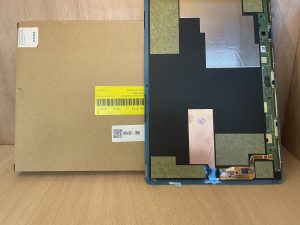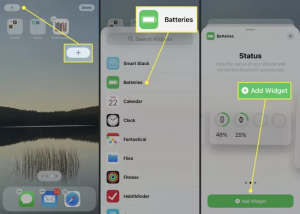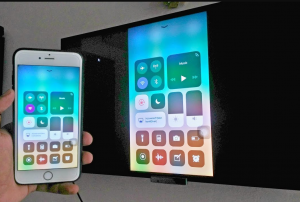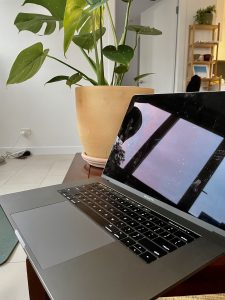The need for screen replacement is a common concern for iPhone users, and understanding the process and options available for iPhone 14 Pro screen replacement is crucial. When faced with a cracked or malfunctioning screen on your iPhone 14 Pro, seeking professional assistance for screen replacement is recommended to ensure the device’s optimal performance and aesthetics. It is essential to consider factors like warranty coverage, repair costs, and service quality when choosing where to replace the screen of your iPhone 14 Pro.
Beyond the physical repair aspect, iPhone 14 Pro screen replacement plays a significant role in restoring the user experience and preserving the device’s value. By coping with screen damage promptly and effectively, iPhone 14 Pro users can continue to enjoy the full potential of their premium device without compromise. In this blog post, we will discuss Step by step process of how to replace the iPhone 14 Pro screen. Let’s get started!
Tools and Materials Required
Having the right tools and materials is crucial for any repair or maintenance task. They ensure efficiency, accuracy, and safety throughout the process, ultimately leading to better results and longevity of the repaired item.
Here are the tools and materials typically needed for an iPhone 14 Pro screen replacement:
Tools:
*Pentalobe screwdriver
*Phillips screwdriver
*Spudger tool
*Suction cup
*Tweezers
*Opening picks
*Heat gun or hairdryer
*Anti-static wrist strap (recommended)
Materials:
*Genuine iPhone 14 Pro screen replacement assembly
*Adhesive strips or glue (if not included with replacement screen)
*Cleaning cloth
*Isopropyl alcohol (90% or higher)
Precautions
It is necessary to be careful before the iPhone 14 Pro screen replacement to prevent any potential issues. So follow these precautions:
- Battery Discharge: Before starting the screen replacement process, ensure that your device’s battery level is below 25%. This precaution reduces the risk of fire in case the battery gets damaged accidentally during disassembly.
- Swollen Battery Precautions: A swollen battery can pose significant safety hazards, so handle the device with care and consider seeking professional assistance.
- Wear Safety Gear: When working on your iPhone, wear safety gloves and goggles to protect your hands and eyes from glass shards and other potential hazards.
- Work in a Clean Area: Choose a clean and well-lit workspace for the screen replacement.
- Disconnect Power: Before initiating the repair, ensure your iPhone is powered off to prevent any electrical hazards or accidental damage to internal components.
Steps to Replace iPhone 14 Pro Screen
If you want to replace your iPhone 14 Pro screen effectively, then you have to follow each given step in this blog post. Let’s discuss these steps in detail.
Step 1: Unscrew the Bottom Pentalobe Screws
*Before you begin disassembling your iPhone, make sure to power it off completely to avoid any electrical mishaps during the process.
*Start by locating the two small pentalobe screws at the bottom edge of your iPhone 14 Pro. These screws are typically 6.8 mm long and require a P2 pentalobe screwdriver for removal.
*Carefully insert the pentalobe screwdriver into each screw head. Ensure you’re applying steady pressure to avoid stripping the screws.
*Turn the screwdriver counterclockwise to loosen and remove the screws.
Step 2: Mark Your Opening Picks
*Start by measuring 3 mm from the tip of your opening pick using a ruler or measuring tape.
*Using a permanent marker, make a visible mark at the 3 mm point on your opening pick.
*This mark will act as a guide to prevent inserting the pick too far into the device.
Step 3: Protect the Cracked Screen
*Begin by laying down overlapping strips of clear packing tape over the entire surface of the cracked screen. This will help contain any loose glass fragments and prevent them from causing further damage or injury.
*Ensure that the entire face of the iPhone’s screen is covered with the packing tape, leaving no exposed areas. The tape will act as a temporary barrier, holding the broken glass in place.
*It’s highly recommended to wear safety glasses during this repair to protect your eyes from any glass particles that may become dislodged during handling.
Step 4: Applying Heat to the Bottom Edge
*Use a hair dryer or a heat gun set to a moderate temperature to heat the bottom edge of the iPhone for approximately 90 seconds or until the screen feels slightly too hot to touch. The heat will help soften the adhesive, securing the screen.
*Remember never to leave the hair dryer or heat gun in one spot for too long. Keep the device in constant motion to distribute the heat evenly and prevent overheating any specific area.
*Maintain a safe distance between the heat source and the iPhone to avoid causing damage to internal components or the screen itself.
Step 5: Inserting the Opening Pick
*Apply a suction handle to the bottom edge of the screen.
*With firm and constant pressure, pull up on the suction cup to create a slight gap between the screen and the frame of the iPhone.
*Once a small gap is visible, carefully insert an opening pick into the gap under the plastic bezel of the screen. The opening pick will help gradually separate the adhesive holding the screen in place.
*Be patient and avoid using excessive force to prevent damaging the screen or internal components.
Step 6: Heating the Right Edge
*Begin by using a hair dryer set to a moderate temperature.
*Direct the airflow towards the right edge of the iPhone.
*Maintain a steady motion with the hair dryer, ensuring that the heat is evenly distributed across the edge.
*Continue heating the area for approximately 90 seconds, or until the screen feels slightly too hot to touch.
*Regularly check the temperature of the screen to ensure it is warm enough to loosen the adhesive effectively.
Step 7: Separating the Right Adhesive:
*Slide the opening pick around the bottom right corner of the iPhone.
*Continue sliding the opening pick up along the right edge of the iPhone.
*Avoid inserting the pick more than 3 mm into the device to prevent accidental damage to internal components.
*Continue sliding the opening pick until you reach the top right corner carefully leave the opening pick in place to maintain the separation. This will prevent the adhesive from reattaching while you prepare for the next steps.
Step 8: Heating the Top Edge:
*Use the dryer to heat the top edge of the iPhone.
*Maintain a steady motion with the hair dryer, ensuring that the heat is evenly distributed across the top edge.
*Continue heating the area for approximately 90 seconds, or until the screen feels slightly too hot to touch.
*Avoid overheating the device or concentrating the heat on one spot for too long, as this can cause damage.
Step 9:Separating the Top Adhesive
*Begin by sliding the opening pick around the top right corner of the iPhone.
*Avoid inserting the pick more than 3 mm into the device to prevent accidental damage to the top sensors or internal components.
*Continue sliding the opening pick along the top edge towards the top left corner of the iPhone.
*Once you reach the top left corner, carefully leave the opening pick in place to maintain the separation. This will prevent the adhesive from reattaching while you prepare for the next steps.
Step 10: Heating the Left Edge
*Heat the left edge of the iPhone with hair dryer.
*Continue heating the area for approximately 90 seconds, or until the screen feels slightly too hot to touch.
*Avoid overheating the device or concentrating the heat on one spot for too long, as this can cause damage.
Step 11: Handling Delicate Screen Components
*Take note that there are delicate cables running along the left edge of your iPhone 14 Pro. These cables are essential for the proper functioning of the device’s display and other functionalities.
*Avoid inserting the opening pick along the left edge, where the cables are located.
*Inserting the pick in this area can lead to accidental damage or disconnection of the cables, which may affect the performance of your iPhone.
Step 12: Safely Separating the Left Adhesive
*Begin by inserting a second opening pick into the bottom left corner of the iPhone.
*Twist both picks simultaneously in a controlled manner. Apply gentle and gradual twisting force to help release the left edge clips holding the screen in place.
*Avoid applying excessive force or sudden movements that could damage the delicate cables or other internal components.
*Continue twisting both picks until you feel the left edge clips start to release.
*If you encounter difficulty separating the adhesive, consider reheating the left edge using a hair dryer to soften the adhesive again. This will make it easier to manipulate and release the adhesive without causing damage.
Step 13: Opening Your iPhone
*Start by removing the suction handle from the screen.
*Rotate your iPhone so that the right edge is facing towards you.
*Open your iPhone by gently swinging the screen up from the right side.
*During reassembly, carefully align the clips along the top edge of the screen and press the top edge into place before securing the rest of the screen. Ensure that the screen clicks easily into place, indicating a secure fit.
Step 14: Removing Battery Connector Cover Screws
*Using a Y000 screwdriver, locate and remove the eight screws that secure the battery connector cover. These screws include:
*Five screws that are 1.3 mm long
*Two screws that are 1.6 mm long
*One screw that is 1.9 mm long
*Keep careful track of each screw you remove throughout the repair process. Ensure that each screw is returned to its exact original position during reassembly to prevent damage to your iPhone.
*As you progress with the repair, maintain organization by using a magnetic mat or container to store the screws and keep them organized according to their lengths and positions.
*Once the battery connector cover screws are removed, consider this a good opportunity to power on your iPhone and test all functions before sealing the screen back in place during reassembly.
Step 15: Removing the Battery Connector Cover
*Grasp the connector cover with a pair of tweezers to provide a firm grip.
*Slide the connector cover downward gently to clear the flex cables. This action will help disengage the cover from the battery connector.
*Once the flex cables are clear, carefully lift and remove the connector cover from the iPhone.
*Take care not to apply excessive force or bend the flex cables during this process to avoid damaging any internal components.
Step 16: Disconnecting the Battery
*Use the pointed end of a spudger to gently pry up the battery cable connector straight up from its socket. Apply gentle pressure to disengage the connector without bending or damaging it.
*Be cautious not to damage the black silicone seal surrounding this and other board connections. These seals play a crucial role in protecting against water and dust intrusion, maintaining the integrity of your device.
*As you disconnect the battery cable, bend the connector slightly away from the logic board. This action prevents accidental contact with the socket, ensuring that no power is supplied to the phone during the repair process.
Step 17: Disconnecting the Display Cable
*Prepare to disconnect the display cable from your iPhone 14 Pro using the following steps with a spudger:
*Begin by using the pointed end of a spudger to carefully pry up the first display cable connector straight up from its socket. Apply gentle pressure to release the connector without bending or damaging it.
*Take caution when disconnecting connectors like this one. To re-attach press connectors, carefully align and press down on one side until it clicks into place, then repeat on the other side. Avoid pressing down on the middle of the connector to prevent damage to the pins.
Step 18: Disconnecting the Second Display Cable
*Locate the second display cable connector on the logic board of your iPhone 14 Pro.
*Use the pointed end of a spudger to carefully pry up the second display cable connector straight up from its socket. Apply gentle and even pressure to release the connector without bending or damaging it.
*Ensure the connector is fully disengaged from its socket before proceeding further with the repair.
Step 19: Removing the Screen and Applying New Adhesive
*Carefully lift and remove the screen from the iPhone 14 Pro assembly.
*Clean the relevant areas on the iPhone frame using isopropyl alcohol (>90%) and a lint-free cloth. This step will help remove any residue and prepare the surface for new adhesive application.
*Apply new adhesive to the necessary areas on the iPhone frame where the screen will be reattached. Ensure the adhesive is applied evenly and covers the required surface area for secure reattachment.
Step 20: Removing the Front Sensor Bracket
*Verify whether your replacement screen includes the front sensor assembly pre-installed. If it does, you can skip these steps and proceed with screen installation directly.
*Locate the front sensor assembly bracket on your iPhone 14 Pro.
*Use a PH000 screwdriver to carefully remove the two 1.4 mm-long screws that secure the sensor assembly bracket. Apply gentle pressure to avoid stripping the screws or damaging the bracket.
Step 21: Front Sensor Bracket Removal
*Locate the front sensor assembly bracket that is secured by the screws you previously removed.
*Using tweezers or your fingers, carefully grip the front sensor assembly bracket.
*Gently lift the front sensor assembly bracket away from the screen assembly. Take care not to apply excessive force to avoid damaging any components.
Step 22: Heating the Front Sensor Assembly
*Apply the heated iOpener to the top edge of the screen, where the front sensor assembly is located. Hold it in place for approximately two minutes to soften the adhesive underneath.
*Alternatively, you can use a hair dryer, heat gun, or hot plate to apply heat. However, exercise caution to avoid overheating the phone, as excessive heat can damage the display and other components.
Step 23: Disconnecting the Proximity Sensor
*Insert an opening pick between the proximity sensor and its recess on the screen. Position the pick carefully to avoid damaging the sensor or surrounding components.
*Gently pry up with the pick to separate the proximity sensor from the screen. Apply steady and even pressure to loosen the sensor from any adhesive or clips holding it in place.
Step 24: Ambient Light Sensor Disconnection
*Place a thin tool, such as a pick, between the ambient light sensor and its recess on the screen, ensuring careful positioning to prevent any harm to the sensor or nearby components.
*Delicately lift with the pick to detach the ambient light sensor from the screen, exerting steady and uniform pressure to release it from any adhesive or clips securing it in position.
Step 25: Removing the Front Sensor Assembly
*Check if the adhesive has cooled down. If so, apply a heated iOpener to the assembly for one minute to soften the adhesive before continuing.
*Insert an opening pick under the left side of the front sensor assembly.
*Slide the pick under the assembly, applying gentle pressure to separate it from the frame.
Step 26: Removing and Transferring the Front Sensor Assembly
*Carefully lift and remove the front sensor assembly from the frame of your iPhone 14 Pro.
*When transferring the assembly to a new screen, follow these instructions to ensure proper alignment and adhesion:
*Connect the sensors to their designated slots in the frame to align the main section of the assembly correctly.
*Use Tesa tape or similar adhesive to re-adhere any sections of the assembly that are no longer sticky. Apply the tape strategically to secure the assembly in place on the new screen.
*Take care to align the sensors and components accurately during the transfer to ensure optimal functionality once reinstalled.
*Ensure all connections and adhesive are secure before proceeding with the reassembly of your iPhone 14 Pro.
Conclusion
iPhone 14 Pro screen replacement is a crucial process for maintaining the device’s performance and aesthetics. Factors such as warranty coverage, repair costs, and service quality should be considered when choosing where to replace the screen. Beyond physical repair, screen replacement restores the user experience and preserves the device’s value. The step-by-step process outlined in this blog post provides a comprehensive guide for effective screen replacement, emphasizing the importance of tools, precautions, and careful handling of delicate components.































